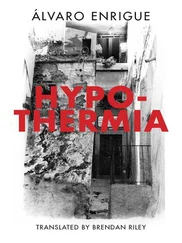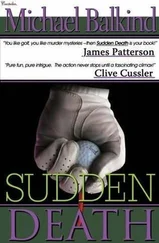The simplicity of Cortés’s Seville possessions indicates something other than poverty: a spirit of retreat and a general disinterestedness; the fact that he was a man who no longer registered the material world, whether distanced by the memory of his momentary step into myth or by the resentment he felt for not having occupied a position of real bureaucratic power since Charles V — his left ball — made him a marquis and removed him from the captaincy of Mexico. It was only after he had been granted the title and returned to New Spain that he realized that this was a kick upstairs, that now he counted only as a millionaire.
Cortés’s widow did play along at court when she eventually returned to Seville, but with an insulting lack of enthusiasm, and mostly to assure the future of her daughter Juana. There is nothing to suggest, however, that she was unhappy. When she left her palace of warmer days (and nights) in Cuernavaca and returned with Juana to Spain, she believed that she had done her duty to the world and she became a luxury object: a person who was invited places and kissed simply because she was someone the conquistador had fucked. She spoke in Bantu to her slaves, in Nahuatl to her attendants, and in Spanish to no one but her daughter — she merely smiled at everyone else, as if they were characters in a dream that had already gone on too long. She didn’t fit into anyone’s present because she was really an utter relic of the past: La Señora Cortés, Marquesa del Valle.
The sword, the lance, the helmet, and the arquebus that would eventually hang on the wall of the garden room at the house of the duke of Alcalá had been kept by Lope Rodríguez after the conquistador’s death, in the hope that Cortés’s widow would send for him to bring them himself to the infinite palace of Cuernavaca.
Lope wrote a florid epistle, impenetrable and idiotic, to the marquesa del Valle, in which he suggested that she pay his way to New Spain so that once he had delivered the weapons he could give her a full account of her husband’s pious last days. Along with the weapons, the bard had rescued the conquistador’s scapular and the coat of arms that Charles V had granted Cortés, created according to a horrendous design that Don Hernán himself had proposed from Mexico.

Despite the enthusiasm with which King Francis received the Anne Boleyn balls, he never used them on court. He was a cultivated, sensitive man, given to secrecy, and though he made a show of satisfaction and mockery when they were presented to him, he never took them out of their box. It was natural in a man of his type, chilly and careful.
Francis I was not a creature of tennis courts and macho posturing. He had been a benefactor of poets and musicians, a patron of Leonardo; he collected books. When he was at last able to seize Milan from Charles V, he plundered all the classical art he could with rigorous benevolence and then lost the city again. His collections would be the foundation for what was later the Louvre — which he rebuilt — and the Bibliothèque Nationale. He financed the expedition of Giovanni da Verrazzano on which Virginia, Maryland, and New York were discovered, with no thought of expanding his realm.
It was in the city of New York that three of the balls made from the hair of the beheaded queen finally ended up. I saw them in the New York Public Library on Fifth Avenue at Forty-second Street, where they are kept in the archives of historic sporting equipment.
King Francis took the three balls to the Palace of Fontainebleau in 1536. There they remained, and never touched a tennis court, as the curator who is in charge of their care today explained to me. Most likely, he said with the air of someone who has spent much time thinking about something, they didn’t spend long in the trophy hall before they were assigned a humbler and more honorable role as bookends. Were they removed even once from the box before they arrived in America? I ventured. Unlikely. Can I touch them? No. Why are they here? Andrew Carnegie bought them in a lot of French manuscripts and donated them to us; they arrived with the steel beams that hold up the ceilings of the library’s underground stacks. I persisted: Is there any proof that they’re the same balls from the box that Rombaud gave to Francis I? He pointed with his gloved index finger to an inscription on one of them in letters indecipherable to me: “Avec cheveux de la vermine hérétique.” He translated for me, smugly: With hair from the heretic vermin.

Never has a man done for any faith what Hernán Cortés did for Renaissance Catholicism, and yet five centuries after the greatest religious feat of all time, the Vatican continues to look the other way whenever his name is invoked. What a provincial brute he must have been never to receive recognition for having set at the feet of the pope — his right ball — a world complete with all its animals, plants, temples, and little houses with hundreds of thousands of ladies and gentlemen inside, cavorting like rabbits, taking advantage of the fact that they could run around almost buck naked in the eternal good weather.
One has to see Cortés sweating in his armor, smoke-blackened and splattered by the blood of his enemies, imagine him blasting gods with his cannon. More than a soldier, statesman, or millionaire, the conquistador was the eye of a storm that hovered over the Atlantic for twenty-six years, its winds uprooting houses everywhere from the imperial Vienna of Charles V to the Canary Islands, from the Canary Islands to Tenochtitlan, from Tenochtitlan to Cuzco: one and a half million square miles full of people who sooner or later would become Christians because an uncredentialed man in his forties from the backwater of Extremadura had broken the stewpot of the world without realizing what he was doing.
Each second, 4.787 people are born in Mexico, and 1.639 die, which means that the population increases by an average rate of 3.148 Mexicans per second. A nightmare. Today there are more than 117 million Mexicans, and an unspecified number followed by six zeros in the United States. A rough calculation suggests that between 1821, the year the country gained its independence, and the second decade of the twenty-first century, 180 million Mexicans, more or less, have been born. Out of all of them, only José Vasconcelos considered Cortés to be a hero. His unpopularity is nearly universal.
Take, for example, an inexplicable organization called the Mexican National Front, consisting of thirty-two skinheads. The thirty-two morons who belong to the Front are admirers of Hitler — and even they explain on their website that Cortés was a bastard. With the marquis del Valle we have a case of the most spectacularly bad image-management of all time. His last wish was for his body to be brought back to Mexico, where he wanted to be laid to rest. None of the 1.639 Mexicans dying at this instant visited his tomb; all would be opposed to a monument being raised to him, to his being memorialized on a plaque, to any object in the world reminding them of his existence. The 4.787 who’ve just been born will feel the same way. He did something very wrong, and he knew it: in his will he left alms for four thousand masses to be said for the salvation of his soul. If the masses, paid in advance, were said once a day in the parish church of Castilleja de la Cuesta, eleven years after his death his spirit was still being nervously commended each morning to the souls in purgatory.
Читать дальше













